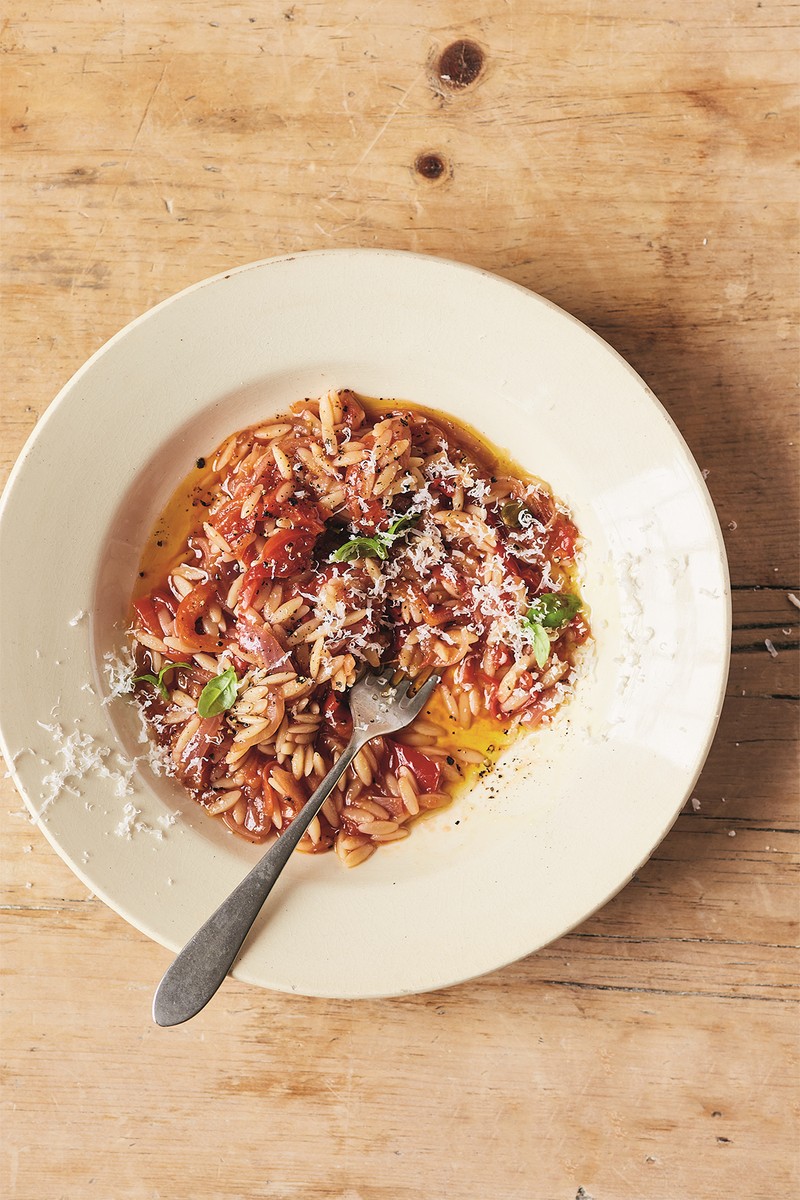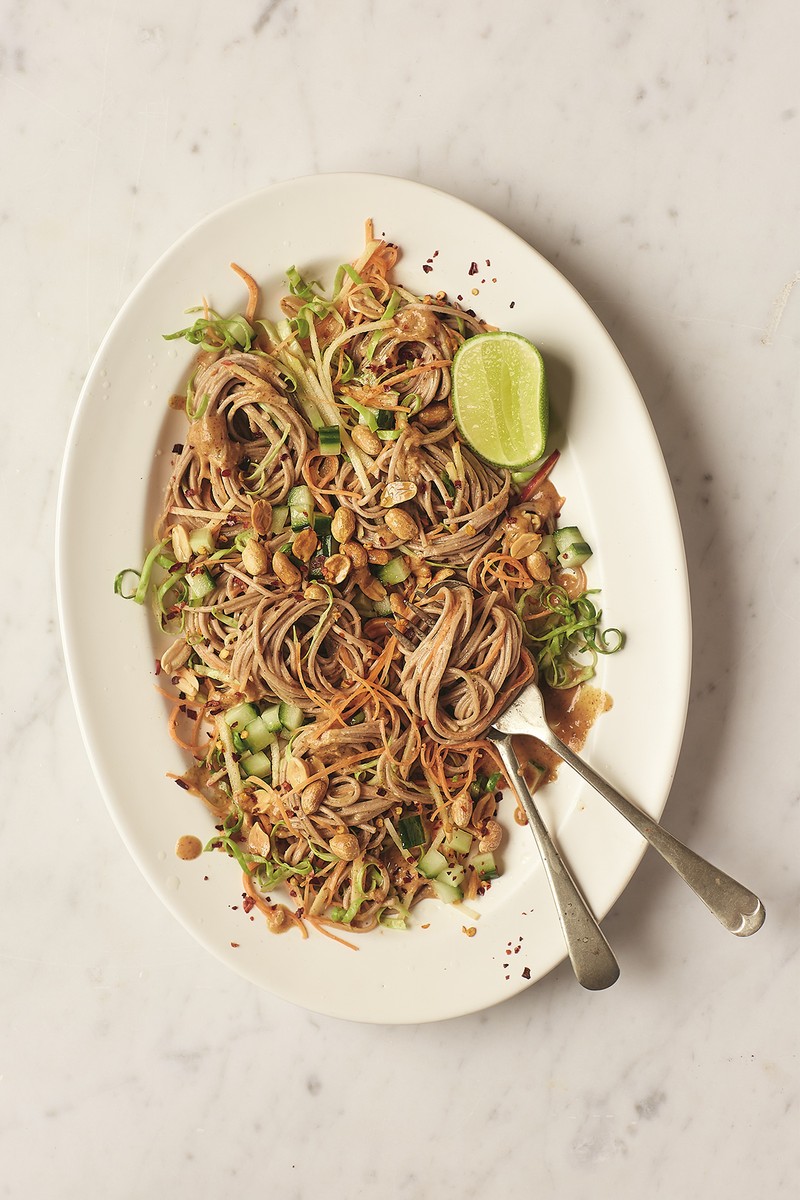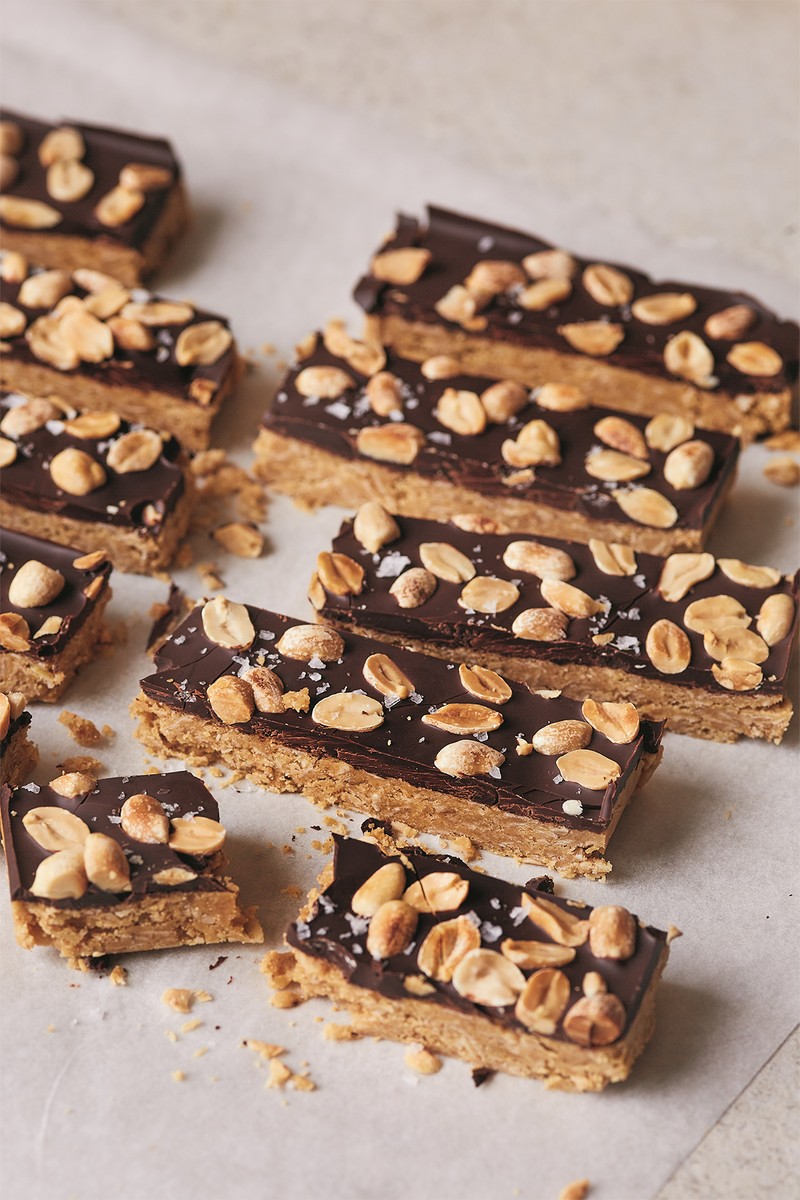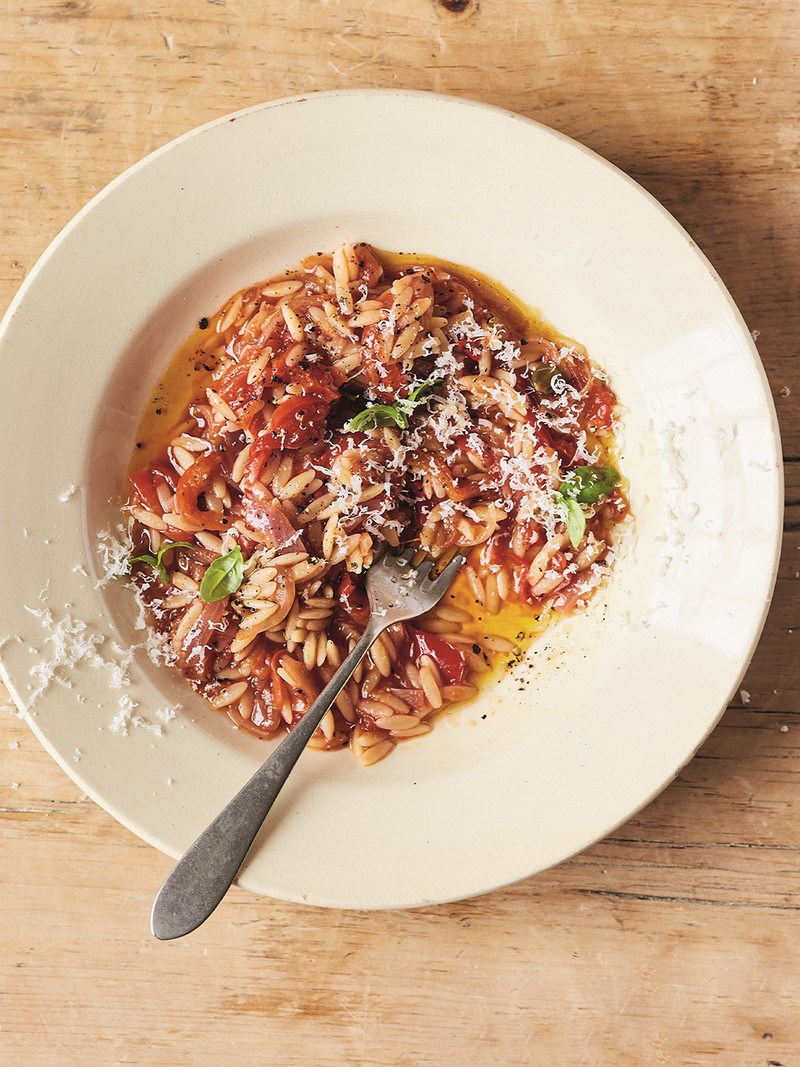
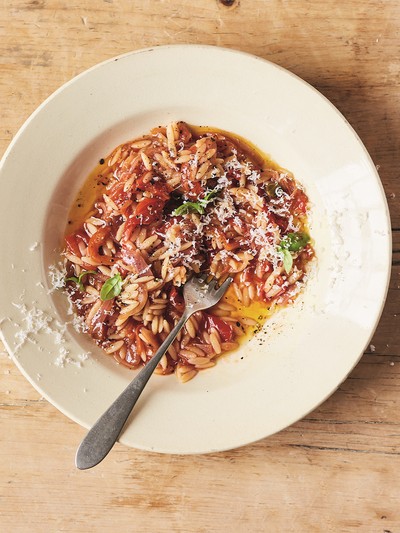
3 Recipes That Avoid Ultra-Processed Foods
Ultra-processed foods (UPFs) have become a worrying topic of late, thanks to the fact that UPFs are linked to multiple serious poor physical and mental health outcomes. In the UK we eat more than any other country in Europe: on average, over two-thirds of our plates are made up of UPFs. Generally, it refers to foods that are highly altered, highly palatable and contain unrecognisable ingredients you wouldn’t add when cooking at home – think the confectionary aisles, fizzy drinks, some ready meals, ready-to-eat sauces and pastes, and most supermarket breads and breakfast cereals. It’s important to highlight that UPFs are a broad category of foods and not all UPFs are the same.
After becoming a mum last year, I was even more committed to creating a healthy antidote to all the alarming statistics around UPFs. I aim to prioritise less processed foods, but I do eat some UPFs and I don’t wish to demonise them all. I think about flipping my plate ratios, so instead of my average plate during a busy week being two-thirds full of UPFs, I aim for two-thirds of whole foods and minimally processed foods. The more of these we eat, the less room there is on the plate for UPFs.
The easiest way of reducing UPF consumption is to cook more and prioritise whole foods. For example, fruits, veg, grains, beans, lentils, herbs, spices, nuts and seeds. This is easy to say but can be difficult to put into practice when we are time poor and high on demands. Here are some of my tips to reduce them in your diet:
- Eat more home cooked food. That doesn’t mean you have to cook every meal, though.
- Meal prep. An hour a week saves so much time each day.
- Make a jar of really good salad dressing – it will keep in the fridge up to two weeks and you’ll probably be more likely to eat more salad.
- Freeze a favourite dish, especially comfort foods. I like knowing I’ve got my favourite cosy comfort food in the freezer when it’s my time of the month.
- Make your own sweet treats, like my chocolate peanut butter bars below.
- Cook once, eat twice or thrice. Batch cooking is ideal for this.
- Check the labels of your favourite foods. Bread is one of the most-bought UPF foods so check the label to find a brand that has minimal ingredients. Most of us are chasing our tails so we don’t always have time to check every single packet. But it’s really worth having a go at it. Perhaps prioritise doing so with products you eat a lot of or eat daily.
- Don’t put pressure on yourself. We know perfection is the enemy of progress so a good place to start this reboot is to try not to stress about it – this isn’t a diet or regime, it’s not about all or nothing and no one is telling you what rules to follow. If anything, the only guide I’d offer is ‘make more of the foods that make you feel good’. Go for delicious and doable recipes that you enjoy eating.
Eating in line with the seasons is more affordable and a good place to start. Seasonal food in the summer includes tomatoes, peppers, cucumbers, courgettes and peas – they tend to taste best and grow abundantly as they are growing when nature intended, and this is reflected in the price. Then, come the end of September as the days get shorter and we are nearing the autumn equinox, start shopping seasonally for the amazing variety of squash, pumpkins, celeriac, and all the brassicas, like kale, brussel sprouts and cauliflower. Plus, if you're not already doing so, think about how much of your groceries you can actually eat to get more value. For example, with cauliflower, the stem is edible – just chop it finely and add it to stir-fried noodles. The leaves are great, too, especially when fried with garlic and ginger. The same goes for broccoli; I love using the stems.
You could also consider buying an online veg box. There are lots to choose from, but my favourite is Riverford. Look out for so called ‘wonky’ fruit and veg – the imperfect ones are often cheaper. I also love frozen food and recommend making it a staple in your shopping. Frozen items are flash-frozen, which helps retain their nutrients. It also means you can use what you need, and you don't have to worry about food going off quickly in the fridge. A third of food produced is wasted, which is a huge loss for both the planet and our wallets. That's why I'm a big advocate for eating well while saving money, and for me, frozen food is essential.
At home I always have a selection of staples to make cooking easier. In the freezer, I stock up on spinach, edamame beans, and have a selection of batch-cooked meals to save time. My cupboard is filled with tins of tomatoes, coconut milk, beans, and chickpeas. In the fridge, I keep miso, halloumi, feta, and rocket. And on my counter, you'll find olive oil, Maldon Sea Salt, a selection of spice mixes, garlic, ginger, and a herb pot. These essentials help streamline cooking and ensure I always have what I need.
One of my favourite food brands is Clearspring, which makes amazing miso and noodles. I also love Odysea’s feta and halloumi; Biona for trusty tinned staples, pasta and wild rice; and Bold Bean Co’s jarred beans. Another favourite is Zaytoun for the most incredible za’atar (delicious sprinkled on fresh tomatoes on toast or roasted sweet potato), and I always buy Fairtrade olive oil.
One of my favourite recipes from the book is the veg noodle salad . It’s perfect for a hot night supper – you just cook the noodles then pop the leftovers in the fridge to enjoy for a packed lunch. Because the veg is fresh and crunchy, it lasts in the fridge and it’s rich from the peanut butter and zesty and zingy from the lime. I also love the pepperonata orzo pasta which is summer in a bowl and perfect for when friends come over. When the weather gets cooler, I’ll be enjoying the harissa lentil pie with feta mash, and the golden chicken and barley soup. Both are easy to make, family-friendly and great for batch cooking so you can make them on the weekend and enjoy leftovers during the week.
For a healthy office snack, try the chocolate peanut butter bars (recipe also below). I’d also make a jar of the spiced nuts and seeds. They’re great topped on an otherwise unsatisfying shop-bought salad. And we know that nuts and seeds are so good for our brain health, so you’ll probably have a more productive day at the office too. During a busy week, I like to make the apple ginger bircher muesli which you can prep on a Sunday night and pop into jars to store in the fridge.
Inspired? Try the recipes below...
Peperonata Pasta
Heat the olive oil in a large pot over medium heat. Add the red onions, red peppers, and a pinch of salt and pepper. Cover and cook for 15 minutes, stirring occasionally.
Add the garlic and chilli flakes to the pot and cook for another 1-2 minutes until fragrant. Stir in the chopped tomatoes and capers. Bring to a boil, then reduce the heat and simmer uncovered for 15 minutes, stirring occasionally.
While the sauce simmers, bring a large pot of salted water to a boil and cook the orzo until al dente. Reserve a mug of pasta water, then drain the orzo.
Taste the sauce and adjust the seasoning with red wine vinegar, salt, and pepper as desired. Add the orzo to the sauce along with a splash of the reserved pasta water. Toss to combine.
Serve immediately, garnished with fresh basil leaves, grated parmesan, and an extra drizzle of olive oil.
Big Veg Noodle Salad With Lime, Ginger & Peanut Dressing
For the dressing, whisk all the ingredients in a small bowl or shake in a jar. Taste for seasoning.
Cook the noodles according to the packet instructions, then drain and rinse immediately with cold water. Toss the noodles with the sesame oil and set aside.
Toast the peanuts in a dry frying pan over a medium heat for 3-5 minutes, shaking the pan every so often, until golden.
In a large bowl, toss together the noodles, carrot, cabbage, apple or pear and roughly half the dressing. Slowly add more splashes of dressing if you like, tossing as you go, until everything is nicely coated. Top with the cucumber and peanuts.
Chocolate Peanut Butter (No-Bake) Bars
Line a small tin or dish (about 15 x 8cm or square equivalent) with greaseproof paper, ensuring it extends up the sides for easy removal.
In a bowl, mix together the peanut butter, ground almonds, oats, maple syrup, vanilla extract and sea salt until well combined.
Transfer the mixture to the lined tin, pressing down firmly with the back of a spoon or spatula to ensure an even and compact base.
For the chocolate layer, melt the dark chocolate in a bain-marie (a heatproof bowl set over a pan of lightly simmering water, making sure the bottom of the bowl doesn’t touch the water). Once melted, stir in the peanut butter until smooth.
Pour the chocolate mixture evenly over the base. If using, scatter the toasted peanuts over the chocolate layer and sprinkle with a little flaky sea salt.
Refrigerate for 1 hour or until firm. Once set, cut into 16 pieces to serve.
The Real Healthy Cookbook: Unprocess Your Everyday Meals by Melissa Hemsley (£26, Ebury Press) is available now.
Visit AMAZON.CO.UK
DISCLAIMER: We endeavour to always credit the correct original source of every image we use. If you think a credit may be incorrect, please contact us at info@sheerluxe.com.

